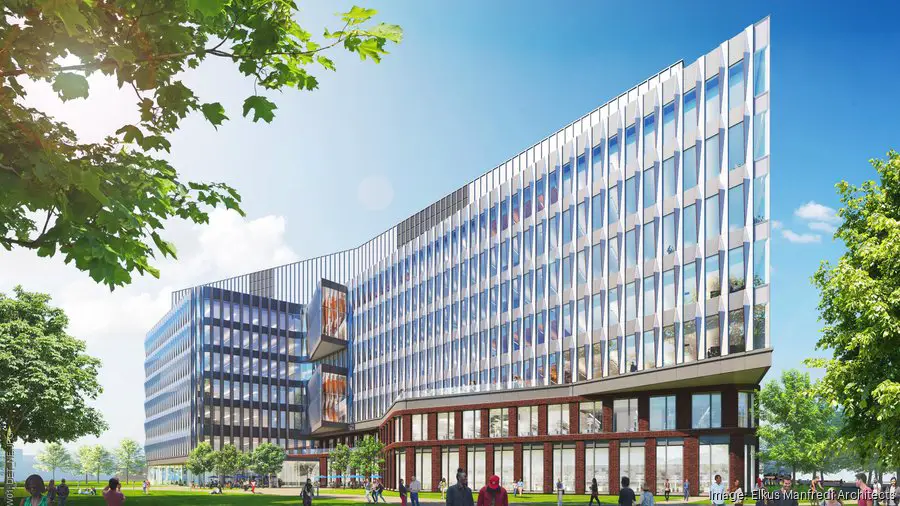On September 20th, The University of Texas MD Anderson Cancer Center embarked on a significant endeavor, they broke ground for a new building, the South Campus Research Building 5 (SCRB5). This project represents a substantial investment of $668 million and reflects their commitment to advancing cancer research.
The SCRB5, a seven-story building, is taking shape at 1920 Old Spanish Trail. It’s not just any building; it will play a crucial role in expanding immune therapy treatments for cancer patients, hosting the James P. Allison Institute. Alongside this, it will house other strategic research programs. But it’s not all work; there will also be spaces for dining, conferences, and lectures.
The design of the South Campus Research Building 5 is a collaborative effort with contributions from Boston-based Elkus Manfredi Architects and Mikyoung Kim Design, also based in Boston. Houston-based Vaughn Construction will bring the vision to life.
MD Anderson’s new South Campus Research Building 5 completion date
If all goes according to plan, it should be ready by the spring of 2026. This new building also extends the reach of the Texas Medical Center’s Helix Park, a massive life sciences complex south of the medical center. The SCRB5, covering a vast area of 600,000 square feet, aims to become a hub for cancer research.
Dr. Philip Jones, the Vice President of Research Strategy and Operations at MD Anderson, is excited about the potential of this new building. He sees it as a place where the world’s top cancer research minds will come together to tackle the common goal of ending cancer. It’s a place where collaboration is key, and breakthroughs are the desired outcome.
Read also: University of Louisville Hospital US$190 mn expansion begins
In addition to the South Campus Research Building 5, MD Anderson is also sharing space with other institutions in the TMC3 Collaborative Building at Helix Park, covering 24,000 square feet. This collaborative spirit extends to Portal Innovations, a Chicago-based life sciences venture capital firm, joining the venture in the summer of 2023.
The South Campus Research Building 5 is designed to be efficient and functional. With flexible research areas and modern facilities that incorporate the latest technologies. With the James P. Allison Institute leading the way, this building holds the promise of transformative discoveries in the ongoing battle against cancer.

